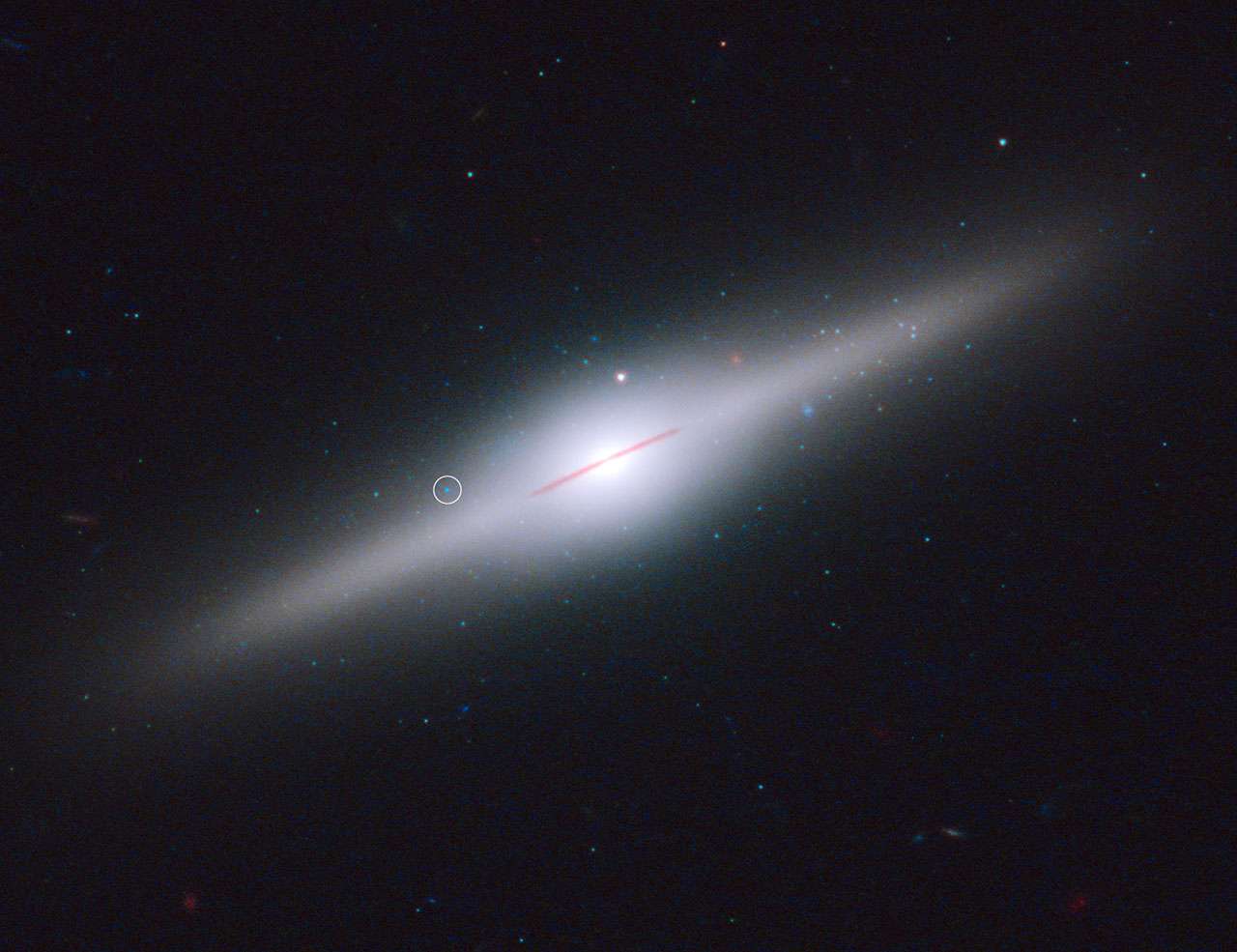The Cosmos with ESO 243-49
This spectacular edge-on galaxy, called ESO 243-49, is home to a possible intermediate-mass black hole that may have been purloined from a cannibalised dwarf galaxy. The black hole, with an estimated mass of more than 1000 times that of our Sun, lies above the galactic plane. This is an unlikely place for such a massive back hole to exist. One explanation is that the black hole belonged to a small galaxy that was gravitationally torn apart by ESO 243-49. The circle identifies a unique X-ray source that pinpoints the black hole. The X-rays are believed to be radiation from a hot accretion disc around the black hole. The blue light not only comes from a hot accretion disc, but also from a cluster of hot young stars that formed around the black hole. The galaxy is 290 million light-years from Earth. Hubble can’t resolve the stars individually because the suspected cluster is too far away. Their presence is inferred from the colour and brightness of the light coming from the black hole’s location.
